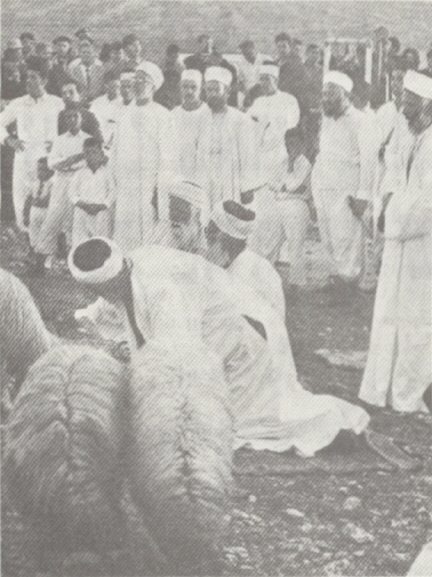The Samaritans — A Living Link with the Past Part II -- By: Sylvia Mann
Journal: Bible and Spade (First Run)
Volume: BSP 06:4 (Autumn 1977)
Article: The Samaritans — A Living Link with the Past Part II
Author: Sylvia Mann
BSP 6:4 (Autumn 1977) p. 105
The Samaritans — A Living Link with the Past
Part II
Like the Jews, Samaritans celebrate three main pilgrim festivals. The Passover pilgrimage is especially meaningful, for it is part of their creed that members should make every effort to reach Mount Gerizim at least once a year — on the first day of Passover. Rites are carried out precisely according to the instruction in Leviticus 23:5: ‘In the fourteenth day of the first month at even is the Lord’s pass-over,’ and in Exodus 12:4–5, that every man take ‘a lamb for the house, and if the household be too little for a lamb, let him and his neighbour.. . take it according to the number of souls.’
Ten days or so before the feast, each family gathers in its own small stone croft at the foot of the mountain, bringing with it the sacrificial lamb. On the appointed evening, the men dress in white robes and enact the biddings of Exodus 12:11, that ‘ye shall eat it with your lions girded, your shoes on your feet, and your staff in your hand, and ye shall eat it in haste,’ in rememberence of the hurried exodus of the Hebrews from Egypt. While prayers are chanted, the paschal lambs are ritually slaughtered on the open hillside and ‘roasted with fire.’
On the feast of Tabernacles, the traditional booth, or Succah, is put up inside the home rather than outside as is the Jewish practice, for bitter experience across the ages has taught this vulnerable people the dangers of conspicuousness. For the same reason, mezzuzoth — metal or wooden cases enclosing small scrolls inscribed with two
BSP 6:4 (Autumn 1977) p. 106

‘In the fourteenth day of the first month at even is the Lord’s passover.’ (Lev. 23:5). The sacrifice of the paschal lamb on Mount Gerizim, climax of the Passover pilgrimage.
passages from Deuteronomy — are not affixed to the door-jamb as in a Jewish house, but are hung inside. Sometimes the appropriate passages are chiselled in ancient Hebrew on a stone block and the block is then set in the facade of the building. Other holy days are the New Year — Rosh Hashanah, also considered Moses’ birthday, which is celebrated for one day only, and the Fast of Atonement — Yom Kippur — when only infants below the age of a year are exempt from fasting.
Marriage customs follow the immemorial rules observed by Jews. Unions are stable, for although Samaritan law grants divorce in certain cases, it happens very rarely....
Click here to subscribe
